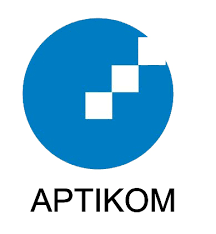Implementation of Multiclass Support Vector Machine for Classification of New Students Receiving Achievement Scholarships at Universitas Muhammadiyah Yogyakarta
DOI:
https://doi.org/10.18196/eist.v1i3.10627Keywords:
Scholarship Selection, Classification, Multiclass Support Vector Machine (LibSVM)Abstract
The selection process for scholarship grantees at Universitas Muhammadiyah Yogyakarta (UMY) still utilizes the conventional method, namely Microsoft Excel. It is conducted by inputting all student data, then sorted from the highest to the lowest. Scholarships for prospective new students must be right on the target, meaning that they meet the criteria for students eligible for scholarships. It is intended not to harm other prospective students who should get scholarships. In previous studies, the classification process used many algorithms such as Naive Bayes, C.45, Decision Tree, k-Nearest Neighbor, and Support Vector Machine. The use of the Support Vector Machine algorithm employed a two-class classification. Support Vector Machine and Decision Tree algorithms are two classification methods that can obtain precise and accurate results. This study aims to use the Multiclass Support Vector Machine (LibSVM) algorithm to classify the achievement scholarship rankings for new students. The minimum amount of data used affected the classification results. From the 2015 to 2019 data, the highest amount of data was 2015, obtaining the highest accuracy result of 84.34% using the sigmoid kernel type and the k-fold value of 3. The classification was based on the entry system stages. PMDK stage 2 obtained an accuracy of 81.38%, with the most data amounting to 268 from stage 3.
References
Dillak, R. Y., Pangestuty, D. M., dan Bintiri, M. G. “Klasifikasi Jenis Musik Berdasarkan File Audio Menggunakan Jaringan Syaraf Tiruan Learning Vector Quantization”. in Seminar Nasional Informatika 2012 (semnasIF 2012) UPN ”Veteran” Yogyakarta, Yogyakarta, 2012.
E. P. Wigner, “On a modification of the Rayleigh–Schrodinger perturbation theory,” (in German), Math. Naturwiss. Anz. Ungar. Akad. Wiss., vol. 53, p. 475, 1935.
Fakhriyani, Widodo, and Adhi, B. P. “Perbandingan Algoritma Naive Bayes Dan Support Vector Machine Dalam Seleksi Kelulusan Pemberkasan Beasiswa BPPPPA Fakultas Teknik Universitas Negeri Jakarta”, Jurnal PINTER, 108-115. 2018.
Han, J., Kamber, M., and Pei, J. “Data mining: concepts and techniques”. 3rd Edition. San Francisco: Morgan Kaufmann publications, 2012.
P.A. Octaviani, Y. Wilandari, and D. Ispriyanti, “PENERAPAN METODE KLASIFIKASI SUPPORT VECTOR MACHINE (SVM) PADA DATA AKREDITASI SEKOLAH DASAR (SD) DI KABUPATEN MAGELANG, Jurnal Gaussian, Volume 3, Nomor 4, pp. 811 – 820, 2014.
Perdana, N. G., and Widodo, T. “Sistem Pendukung Keputusan Pemberian Beasiswa Kepada Peserta Didik Baru Menggunakan Metode TOPSIS”. in SEMINAR NASIONAL TEKNOLOGI INFORMASI & KOMUNIKASI TERAPAN 2013 (SEMANTIK 2013), Semarang, 2013. 265-272.
Prasetyo, E. “DATA MINING- Mengolah data menjadi Informasi Menggunakan Matlab”. Yogyakarta : CV. ANDI OFFSET (Penerbit ANDI), 2014.
Rachman, F., and Purnami, S. W. “Perbandingan Klasifikasi Tingkat Keganasan Breast Cancer Dengan Menggunakan Regresi Logistik Ordinal Dan Support Vector Machine (SVM)”. JURNAL SAINS DAN SENI ITS Vol. 1, No. 1, (Sept. 2012) ISSN: 2301-928X, D-130 - D-135. 2012.
Somvanshi, M., Chavan, P., et al. “A review of machine learning techniques using decision tree and support vector machine. International Conference on Computing Communication Control and Automation (ICCUBEA)” (pp. 1-7). 2014. IEEE Conference Publications.
Sudarajat, A., and Budi, I. “Analisis Kinerja Algoritma Support Vector Machine (Svm) Pada Data Seleksi Penerima Beasiswa Menggunakan Particle Swarm Optimization (Pso) (Studi Kasus: Politeknik Tedc Bandung)”. TEDC Vol. 13 No. 1, Jan. 2019.



